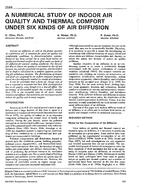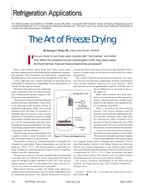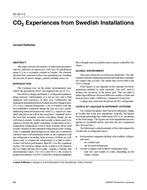Many refrigeration systems have multiple compressors that operate in parallel to meet the aggregate cooling load requirements of the system. Often, individual compressors are equipped with a means of modulating their capacity to match the instantaneous refrigeration demand. Since the efficiency of a compressor changes as it is unloaded (often efficiency decreases), the part-load characteristics of individual compressors will influence the efficiency of the entire system. For this reason, it is desirable to identify operating strategies, properly accounting for compressor unloading characteristics, that maximize the efficiency of the entire system.
This paper shows that when two identical screw compressors are operating in parallel, there exists an optimum point at which it is best to switch from each compressor equally sharing the load to one compressor operating at full load and the other unloaded to match the remaining system load. When two screw compressors of different sizes are operating, an optimal compressor control map can be developed that maximizes the efficiency of the entire system over the entire range of loads. These optimum operating maps are shown to depend on the characteristics of the individual compressor’s unloading performance and the relative sizes of compressors. An optimum control strategy for systems having multiple compressors, screw and/or reciprocating, can be implemented using the concept of crossover points introduced in this paper.
Units: Dual
Citation: ASHRAE Transactions, vol. 108, pt. 1, Atlantic City, 2002
Product Details
- Published:
- 2002
- Number of Pages:
- 7
- File Size:
- 1 file , 300 KB
- Product Code(s):
- D-6969


